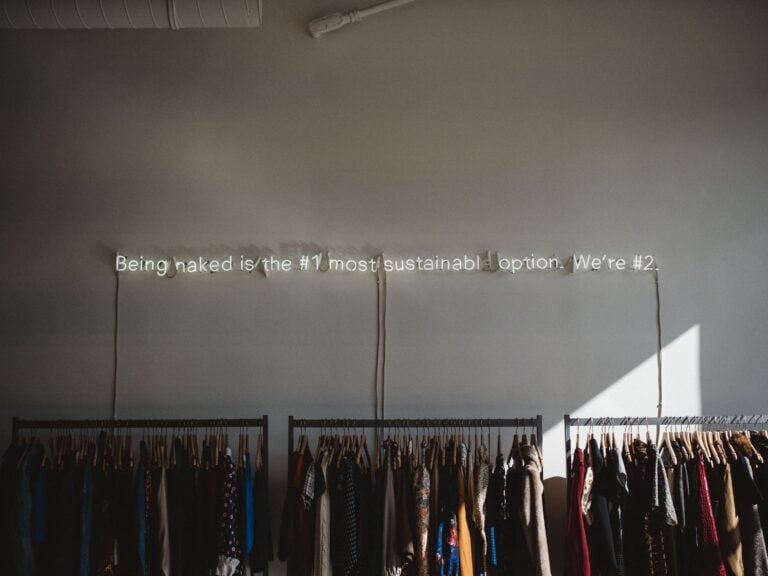 Everyone wants to live more sustainably, but translating into measurable business practices is a challenging opportunity. Evaluating the supply chain is the most beneficial way to hit the ground running. Upstream emissions are most of a product’s carbon footprint, and anyone interested in a greener lifestyle contributes to raising awareness or kickstarting change in a corporation.
Everyone wants to live more sustainably, but translating into measurable business practices is a challenging opportunity. Evaluating the supply chain is the most beneficial way to hit the ground running. Upstream emissions are most of a product’s carbon footprint, and anyone interested in a greener lifestyle contributes to raising awareness or kickstarting change in a corporation.
1. Map and Prioritize
Should you focus on carbon offsets or waste reduction? Environmental activism is multifaceted, and despite enthusiasm, it can’t happen all at once. Mapping the supply chain and reviewing partners is essential for assigning priorities. It’s fascinating to unpack the most wasteful or not eco-friendly parts of a supply chain because it shows where to allocate resources first.
The strategy ensures the most impact happens as soon as possible. These are some of the most notable pain points within supply chains enterprises analyze for sustainability:
- Greenhouse gas emissions
- Waste accumulation
- Water use
- Whether their supplies are sustainably made or packaged
- Transportation
- Productivity and cost-effectiveness
- Compliance
2. Rewire Mindsets
Suppliers must care about being an environmental ally before making meaningful changes to become more sustainable. Frameworks like corporate social responsibility outline the goals intended to guide environmental progress. Ensuring the greenness of a supply chain requires setting expectations with clear communication. Collaboration begins a culture and value shift through the supply chain, encouraging greener practices further upstream.
3. Organize and Minimize
Reviewing suppliers and resetting mindsets helps with stock organization and minimization. Oversupply in warehouses causes over $163 billion in yearly waste — a startling dollar amount translating into unknown pounds of waste in landfills. Warehouse vacancies are decreasing, and instead of curating stores, companies break ground on new storage facilities up to hundreds of thousands of square feet.
The reality is most products end up collecting dust. Reducing inventory is step one. Additionally, reducing waste and byproducts from production lines helps. It prevents defective products from heading to warehouses. Automation tools and robotics scan inventories and precisely catalog for extensive data stores on what is and isn’t taking up real estate. It increases the visibility of what companies have, which many companies remain unaware of.
4. Leverage Data
Technology swiftly handles the warehouse debacle. Consumer data is paramount for knowing what to make and phase out. It doesn’t matter if you make blouses or laptop cases — everything is subject to seasonality and trendiness. It is an exercise of willpower and restraint to halt production or sunset a product because it isn’t selling well.
Using data to inform other sustainability decisions in the supply chain, such as carbon footprint monitoring and machine maintenance, reminds workers to find opportunities in each corner to be more eco-conscious.
5. Training and Optimization
The information from data collection and mindset shifts influence every employee in the supply chain. Previous efforts become more extraordinary with training and a constant desire to improve.
Sustainability in the supply chain isn’t a one-time implementation — it’s a continuous effort. Educate employees on how to interact with new sustainable procedures and programs and encourage feedback and conversation if they notice opportunities for change, including but not limited to:
- Reducing packaging materials or using better packaging
- Optimizing transportation routes for less fuel use
- Using a carbon offset program
- Electrifying antiquated diesel forklifts for better battery and stability
- Change manual paper systems to digital ones to reduce waste
6. Go Scope 3 and Beyond
Carbon emissions have numbered scopes, where Scope 1 is internal and Scope 2 is related to utilities, like electricity. Customers and value chains create Scope 3 emissions. Supply chains have a responsibility to help clients reduce them because they are out of the primary company’s control.
The EPA recommends reporting Scope 3 emissions based on supply chain:
- Size
- Stakeholders
- Risk
- Outsourcing
Supply chains for all sectors unite in industry collaboration to share ideas and insights about successful sustainability efforts they’ve made, such as how to obtain and maintain green compliance frameworks. Collectively, supply chains raise their voices to regulators and consumers to inspire more eco-friendly consumerism.
Supply Chain Sustainability
Transforming a supply chain to be more eco-aware is time-consuming yet rewarding. The change requires discerning what is and isn’t most impactful for the planet’s health and ensuring it translates to all suppliers and every piece of each product.
The big picture isn’t as daunting as it is inspiring to see how many efforts add to a more sustainable whole. The journey forges a more considerate upstream landscape in businesses to which employees and environmental allies contribute.


